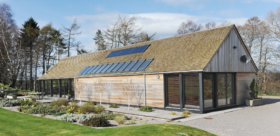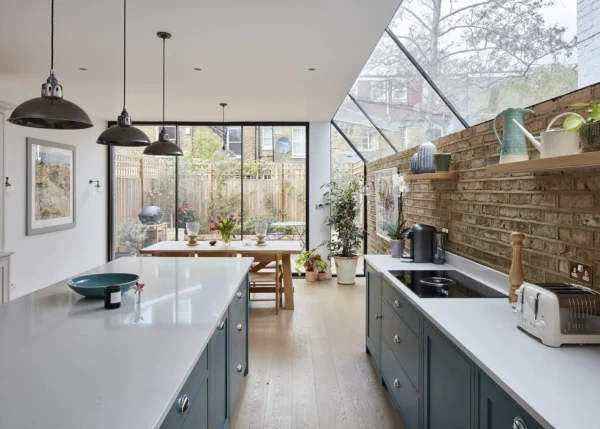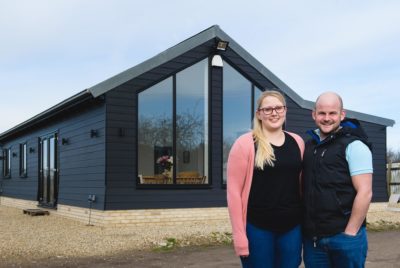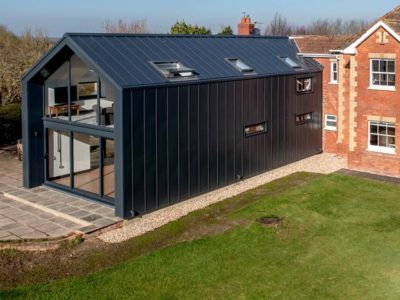Funding for eco builds
Building your own home isn’t like buying an existing house, so it’s no surprise that the finance for a self build works differently. Securing the right type of funding is one of the first steps to a successful homebuilding project.
When budgeting for a green build, you’ll need to take a variety of factors into account, including the availability of mortgages, specific green-lending policies, your chosen building method and the availability of grants and reward schemes, such as the new Feed-in Tariffs. So how does it all work?
Self-build and renovation mortages
With a conventional mortgage, money is released as a single amount for you to purchase a property. But with self-build and renovation versions, funds are released in stages as the build progresses. These stages correspond to the main phases of the construction works (foundations, watertight, first fix, etc). Two types of mortgage are available, defined by when you receive the money during the build – ‘advance’ and ‘arrears’.
The traditional type works on an arrears basis. So funds are released to buy the self-build plot (usually 50 to 80 per cent of the total) or property for renovation (around 75 per cent), and the money for the build is then released in stages. These funds are released at the end of each stage, once the work has been completed. This means you need sufficient savings to finance the early stages of the project, as well as money for the deposit on the land or property purchase.
Not everyone has access to the cash required to get to that point, so BuildStore has created an alternative – the ‘advance’ Accelerator mortgage. In this case, money is released at the beginning of each build stage rather than at the end, which gives you the cash to buy your land or property, purchase materials and pay your builders. You can borrow up to 95 per cent of the cost of the land or renovation property, and up to 95 per cent of the cost of the building works. So it’s ideal if you only have a small amount of cash available and don’t want to sell your existing house to release equity.
Lending on green homes
Though the traditional brick-and-block build route remains popular among self builders, there’s a growing trend towards people looking to use modern and more sustainable construction methods. These include timber and oak frame with high levels of insulation, structural insulated panels (SIPs) and insulated concrete formwork (ICF). You may also be keen to incorporate eco features and materials in your new home – from green roofs and rainwater harvesting systems to natural insulation to biomass boilers.
A number of companies lend on eco projects, but a lot will depend on the specification of materials and build system you choose. The major factors a mortgage provider will consider are the roof and main wall structure. BuildStore can arrange advance and arrears self-build mortgages through all of its lending partners for many of the leading sustainable build systems, including timber frame, SIPs and ICF.
When it comes to lending on ‘alternative’ green building methods (such as cob, straw bale and sedum roofs), the Ecology Building Society can be a good choice. It specialises in mortgages on projects that are built or renovated with respect for the environment at their heart. The Ecology’s ‘C-Change’ mortgages offer a discount of one per cent off the mortgage rate for the part of the loan used to make energy efficient improvements to an existing home.
Alternatively, there’s a sliding scale of discounts from 0.5 per cent to 1.25 per cent for new builds that provide high levels of energy efficiency. So the more of your mortgage you spend on insulation and renewables, the greater your discount. However, you should always compare the rate you’ll be paying after the discount with other mortgage deals – you may get a lower rate overall elsewhere.
Several other companies offer mortgages for eco renovation and conversion projects. The Co-Operative bank offers a good product for existing borrowers in the shape of its Energy Efficient Loan. It allows you to take up to £20,000 of equity out of your house, re-mortgage at a very low rate (1.54% on the £20,000 at the time of going to press) and use these funds to make your home greener.
Eco grants
With an emphasis on energy efficiency in building being legislated for through the Code for Sustainable Homes (CSH) and new Building Regulations, it’s no longer just a case of ticking energy efficiency off on a wishlist. As a result, the grants situation is constantly changing – and will surely be affected by the recent introduction of Feed-in Tariffs and 2011’s Renewable Heat Incentives. Nevertheless, there are grants and funding options available for various eco measures.
The Energy Saving Trust (www.est.org.uk) is an excellent resource for current grants and alternative funding. You can also try your local council, which will offer help with cavity and loft insulation – especially if you are retired or on benefits.
The organisation Carbon Emissions Reduction Target (CERT) has funding in place for those switching to greener heating systems, with the amount available dependent on how much carbon you’re saving. The Low Carbon Buildings Programme also offers grants for green technologies, but you can’t claim for carbon reduction twice, so it’s worth checking whether it’s more beneficial to apply for this government-funded service or go through CERT, which is paid by energy companies.
Many suppliers and manufacturers of eco products now also offer grants and cashback schemes for their products through energy companies, so it’s worth asking whether there are any funding options available before you buy.
Financial incentives
For most homebuilders, the motivating factor for installing renewables is concern for the environment. Renewable systems don’t come cheap, and in the past many self builders accepted that they may never get payback. However, the recent introduction of incentives for renewables has turned this situation on its head – it now makes financial sense to install them.
Basically, you can now receive cashback for producing your own energy via renewable sources. You can expect to receive between two and four times the market rate for the energy you produce – and you can still sell any surplus back to the National Grid, so you stand to gain even more. So not only are you not having to pay for your energy supply (and therefore not paying bills), but you‘ll also be getting an extra source of income. As a general guide, you stand to make somewhere in the region of 10 per cent return on your investment – tax free. So what are the options?
- Feed-in Tariffs (FiTs) These cover photovoltaic solar electricity (pv), wind turbines and hydroelectricity. The tariffs available vary depending on several factors, including when the system is installed (products fitted before July 2009 only qualify for a lower rate) and its capacity. You must use MCS-certified products and installers to qualify for the scheme, and present your energy supplier with a FiT eligibility certificate. You’ll get paid a generation tariff (the biggest portion of the cashback) and an export tariff for any surplus energy you sell back to the national grid.
- Renewable Heat Premium Payments (RHHP) A stop-gap measure until the full-blown Renewable Heat Incentive is launched, the RHPP is basically a grant on renewable heating systems, such as heat pumps, solar thermal panels and biomass boilers. Again, the product and the installer must be registered under the Microgeneration Certification Scheme (MCS).
- Renewable Heat Incentive (RHI) This long-awaited scheme runs along a similar vein to FiTs, in that it pays you cash over time for generating renewable heat. It’s likely that homeowners will be paid according to a predetermined estimate of the amount of heat required to run their homes (to disuade people from investing in oversized, inefficient products). At the time of writing, a summer 2013 launch date has been tentatively suggested in industry circles
































































































 Login/register to save Article for later
Login/register to save Article for later













Comments are closed.